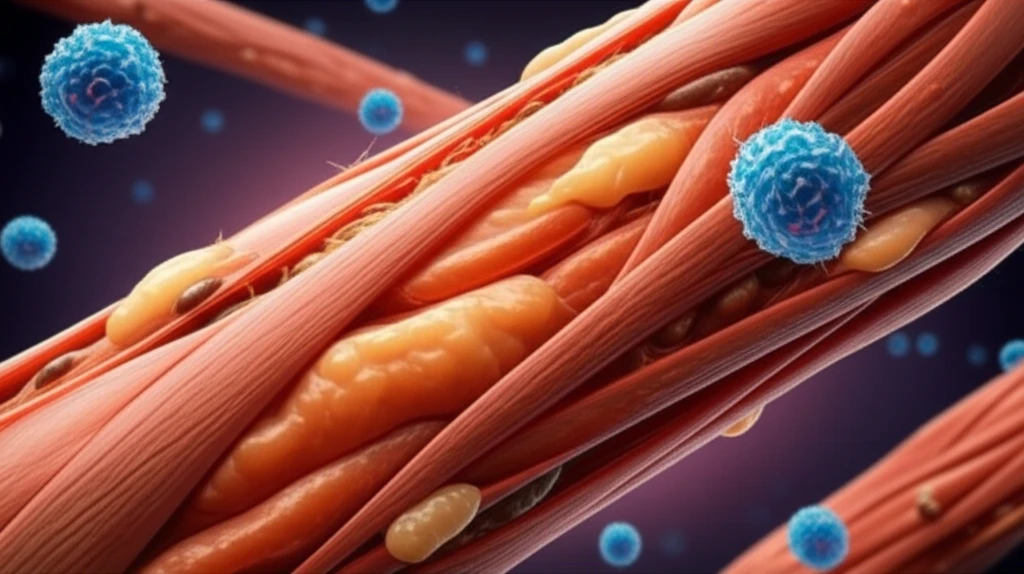
Muscle Macrophages: How These Immune Cells Impact Muscle Growth and Repair
"Discover the surprising role of macrophages, a type of immune cell, in muscle development and how they could hold the key to better treatments for muscle-related conditions."
For years, we've viewed muscle tissue primarily through the lens of exercise and nutrition, focusing on protein intake and workout routines to build strength and endurance. But what if there's another key player in muscle health that we've largely overlooked? Recent studies are shedding light on the critical role of immune cells, specifically macrophages, in muscle development and repair. These cells, traditionally known for their role in fighting off infections, are now being recognized for their surprising impact on muscle tissue.
Intramuscular fat, the kind that nestles within our muscles, isn't just about aesthetics; it's a real concern for several health issues like muscular dystrophies, metabolic disorders, and even the effects of aging. Scientists are really zoning in on these special cells called fibro-adipogenic progenitors (FAPs). Think of them as the main source for creating those unwanted fat cells inside our muscles. However, we are still figuring out the best ways to control how these FAPs behave, especially in us humans. In this study, the researchers wanted to understand if the macrophages can also control human FAP adipogenesis.
A groundbreaking study published in Scientific Reports has uncovered the complex relationship between different types of macrophages and fibro-adipogenic progenitors (FAPs), the cells responsible for creating intramuscular fat. The study reveals that certain macrophages can either promote or inhibit the creation of fat cells within muscles, offering new insights into potential treatments for muscle-related conditions. This is a game changer because understanding these interactions could lead to more effective therapies for muscle disorders.
Macrophages: Muscle's Unlikely Allies or Silent Saboteurs?

Macrophages, a type of white blood cell, are like the cleanup crew and security guards of our bodies. They engulf and digest cellular debris, foreign substances, microbes, and cancer cells. It's only recently that scientists have started to understand the varied roles they play in muscle tissue.
Looking Ahead: Macrophages as Therapeutic Targets
These findings open up new possibilities for treating muscle-related conditions characterized by excess fat accumulation. By understanding how to manipulate macrophage behavior, scientists may be able to develop therapies that promote muscle regeneration and reduce intramuscular fat. This could be particularly beneficial for individuals with muscular dystrophies, metabolic disorders, and age-related muscle wasting. These results may lead to the creation of innovative regenerative medical techniques to stop fat accumulation in diseased muscles linked to chronic inflammation.
